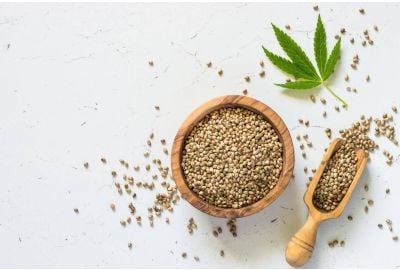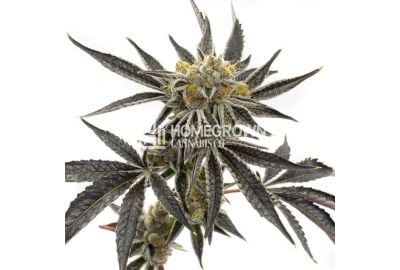How to Grow Purple Weed Plants
If you see purple weed for the first time, you’ll be awed by its beauty. Is it real? Yes, it is.
We review the science that explains how weed gets its violet hue and discuss the top three misconceptions people have about purple cannabis. You’ll also find out if purple marijuana is better than green and learn how to grow your own violet plants.
Our round-up of the seven most popular purple strains will give you an idea of what makes them favorites among cannabis cultivators and smokers.
Let’s get started.
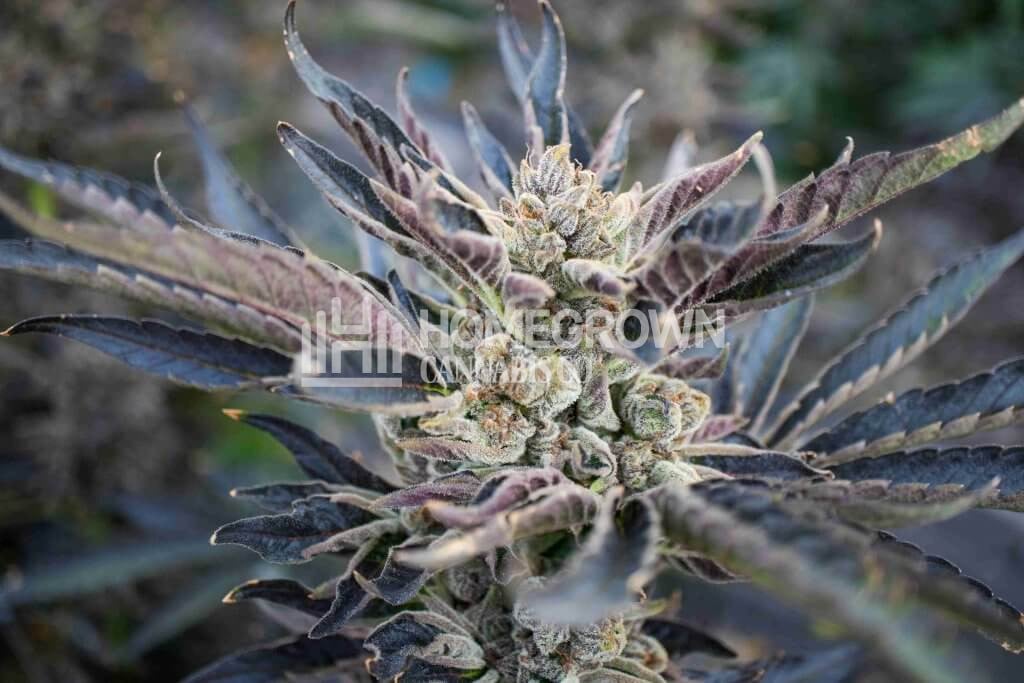
The science behind purple weed: what makes weed purple?
Purple-colored weed has gained popularity over the years. It’s typically admired for its unique colors and potent effects.
Although these plants may look absolutely crazy, they get their color from natural pigments called anthocyanins. Studies suggest that these phytochemicals also offer a range of health benefits.
What’s the difference between green and purple cannabis plants? Most green crops contain chlorophyll, which is responsible for their hue and helps them photosynthesize. A lack of this pigment often results in albino weed.
When chlorophyll is absent, plants turn to anthocyanins for their color, which are part of a larger class of substances known as flavonoids.
Some believe that violet cultivars result from fake purple weed, when in reality, artificially colored plants are easily identifiable. These plants may turn the water red or purple when submerged.
The truth is that genetics and the environment play significant roles in why some weed is purple.
Genetics
The genetics typically determine the color of the most colorful cultivars. Many purple weed strains get their hue from the presence of naturally occurring compounds.
Cannabis plants contain pigments called anthocyanins, which are responsible for producing purple, blue, and red hues. Although the word “cyan” in the name implies that anthocyanins are blue, they deliver a range of other possible cannabis colors.
This natural phenomenon typically occurs in the fall when chlorophyll breaks down and no longer dominates the other flavonoids. Plants have the potential to transform from green to different beautiful shades, like purple, when the anthocyanins are abundant.
Some cannabis strains, like Purple Haze and Purple Kush, are genetically predisposed to produce more anthocyanins than others. As a result, the plants are more likely to turn purple naturally when you grow these cultivars.
Environment
While genetics play a significant role in growing purplish plants, the environment also impacts why some weed turns purple.
Cooler temperatures can trigger the production of anthocyanins in cannabis plants. These compounds protect the plant’s cells from damage caused by UV light, which is why purple plants are often grown in cooler climates.
However, extreme cold can also stress the plant and stunt its growth, so growers must strike a balance between temperature and growth.
The pH levels are another common factor of purple buds. If the pH is acidic, you see red, while blue plants appear at the other end of the scale. Purple weed is usually the result of a more neutral pH level.
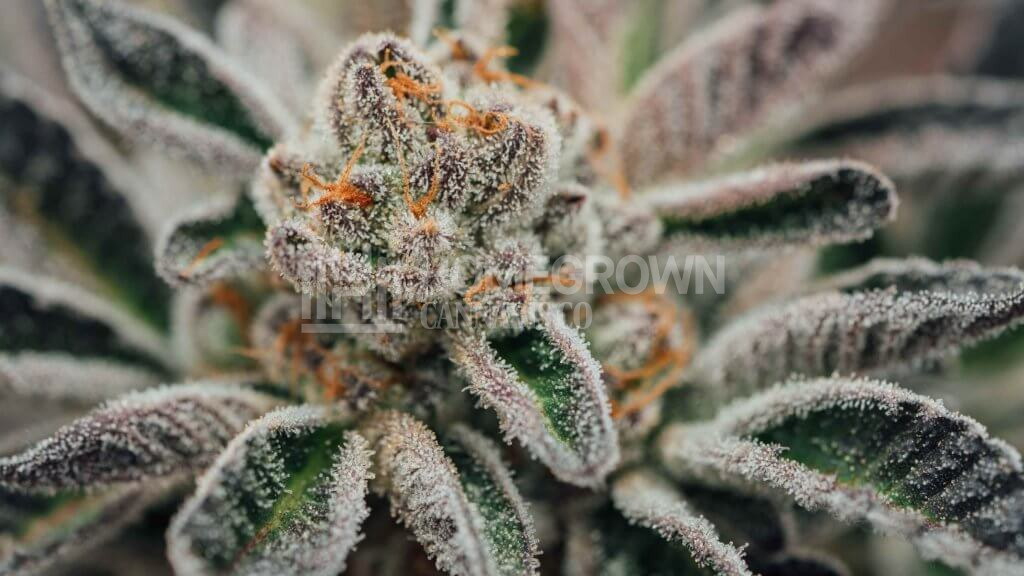
What parts of cannabis can turn purple?
Marijuana plants can exhibit a purple color in various parts of their anatomy. The stems may obtain a purple hue, along with:
- Pistils: These are the sex organs of a female cannabis plant. They’re also called stigmas. You may notice them as fine hairs that appear on the calyx of the flower, indicating it’s a female plant. If the pistils turn violet as they mature, you end up with purp weed.
- Calyxes: The part of the buds formed during the flowering stage of a young plant is the calyx. It protects the plant’s reproductive organs and stabilizes the flowers. You’ll find hundreds of these calyxes stacked on top of one another in a marijuana flower.
- Leaves: You can also have colorful weed if your cannabis plant’s leaves become purple. They’re rarely seen in the final product, as you trim most of them during the post-harvest stage.
- Trichomes: These tiny crystals that cover your buds become opaque later on in the growing cycle, but it’s also possible for them to turn purple.
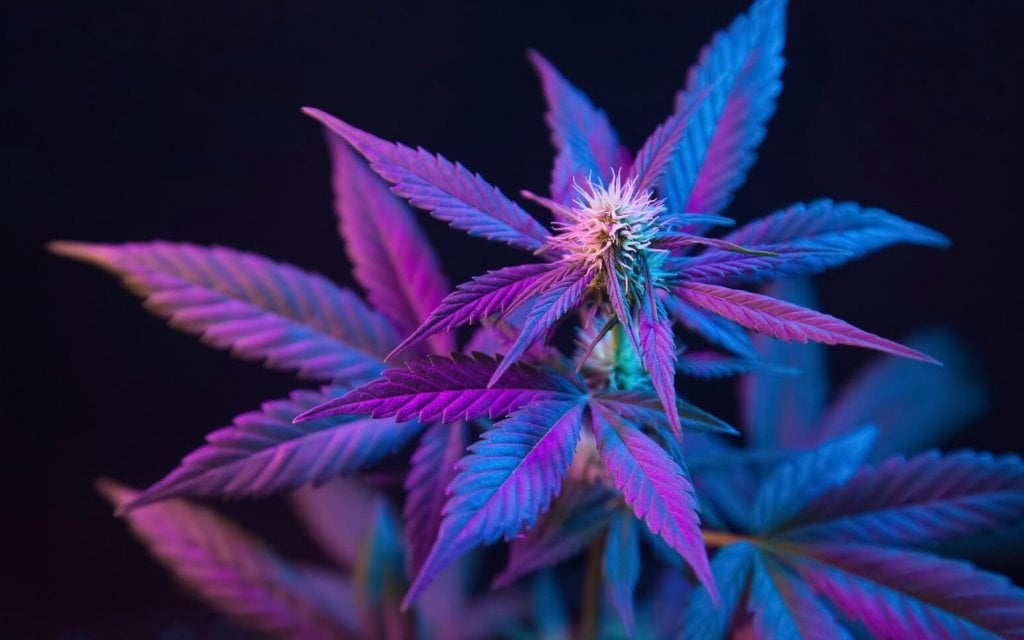
Purple weed effects
The effects of purple weed vary depending on the strain. Some cultivars deliver a relaxing and euphoric experience. You can experience a sense of calmness and tranquility or enjoy a sedative sensation that aids sleep.
Other cannabis cultivars provide a potent high that’s energizing and uplifting. The flavor and aroma add to the overall experience of each strain with distinctive fruity and floral notes.
3 myths about purple weed
There are various myths related to purple weed and how to create it. Let’s uncover three common misconceptions below.
1. Purple weed is purple
Perhaps the biggest myth about purple weed is that it’s purely purple. It doesn’t have to be. Many purple cultivars have other shades that range from dark green to even black. The resulting color depends on the environment and genetics.
2. Purple weed is more potent
Due to their novelty, some users perceive purple marijuana strains to have a higher potency than regular cannabis. However, scientific evidence shows that the cannabinoid content in purple strains isn’t necessarily greater than their green relatives.
3. Purple weed is created by manipulating its growth process
You can’t create a purp weed plant through growth manipulation, as its genetics primarily dictate the pigments. Some people believe that breeders use specific cultivation methods to make purple or pink buds. Most often, this is done for novelty value only.
Let’s review the common techniques claimed to create purple weed, and you’ll see why they’re nothing but myths.
Oxygen deprivation
All living things require oxygen to survive, and cannabis plants are no different. If you deprive your crops of oxygen, you’ll hinder their growth. You won’t force it to change color. It’s a myth that restricting your plants’ oxygen supply will produce purple marijuana.
Carbon dioxide deprivation
Another myth is that depriving plants of carbon dioxide will cause them to turn violet. All you’re doing is preventing your plant from developing correctly by not providing the nutrients it needs to grow optimally. You’ll end up with an unhealthy plant, not purple cannabis.
Nitrogen overload
While nutrients are essential for marijuana crop growth, too much of a good thing may have the reverse effect. Plants need nitrogen to grow, but an excess of the nute can burn and kill them. Instead of purple weed, you’ll have a brown, withered plant instead.
Altering the light cycle
If you have any experience with cultivating cannabis, you know that your crops need sufficient light to grow optimally and produce a good yield. Playing around with the light cycle won’t give you purp weed plants. All you’ll get are unhealthy ones.
Changing the growing medium
Since the hues of a cannabis plant are determined by flavonoids, altering the growing medium won’t produce purple weed. You’re merely messing with the quality of your plants.
Varying the water supply
Plants can survive on varying amounts of water. Cannabis plants that grow in the wild don’t get a steady water supply yet still don’t turn purple. That’s another myth shot down. You won’t create purple marijuana plants by providing your crop with different amounts of water.
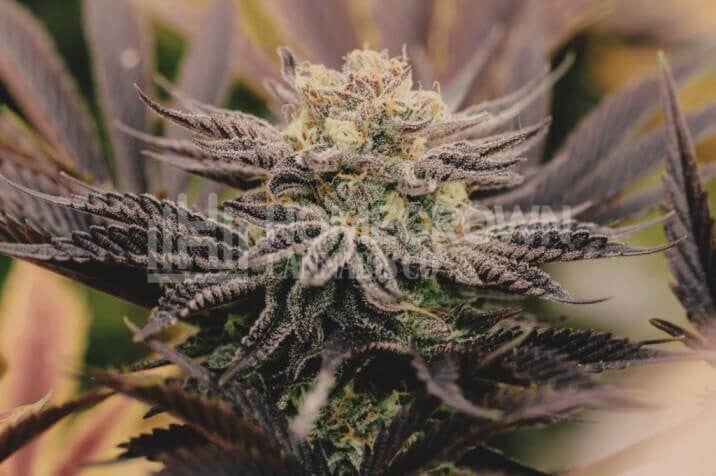
How to grow purple weed
Cultivating purple weed is similar in many ways to growing regular green strains. However, a few factors play a role in turning your cannabis plants purple.
We need to stress that manipulating the plant during its growth period is not recommended. Such practices have been ineffective in producing purple marijuana. They’re more likely to be detrimental to your crop’s health.
Avoid depriving your plant of oxygen, carbon dioxide, and other nutrients that it needs for optimal growth. You should also give it sufficient light to flourish and not fool around with the light cycle to try and get purple weed.
Most of all, don’t use artificial coloring in your cannabis plant. Most dyes in the market contain ingredients that may be carcinogenic. Using them in your crops can adversely affect their health and yours when you smoke them.
If you’re keen to grow purple weed the right way, let’s review the essential factors that’ll give you the result you want.
Buy the right seeds
The genetics of a cannabis plant plays an important role in determining the result you want to achieve, whether it’s high THC, or in this case, a violet hue.
When you’re shopping for seeds to grow purple weed, make sure you choose strains that have been bred specifically for the color purple. Those cultivars that have higher levels of anthocyanins will likely produce purple buds.
To help you select the right seeds, check out our list of the most popular purple strains.
Adjust temperatures to mimic fall
If you recall, purple weed is the result of anthocyanins working their magic. This process typically occurs at low temperatures, which is why plants change colors when fall comes around and temperatures drop from their summer highs.
By mimicking fall temperatures during the flowering stage, your plant will break down the chlorophyll and activate more anthocyanins, which leads to purple cannabis. The ideal nighttime temperature for this process is slightly under 50°F.
If you’re cultivating marijuana plants indoors, all you have to do is set your air conditioning to the temperature you want and wait for the time to harvest purple weed.
Special lighting
Some cultivators believe LED grow lights with a purplish hue enhance the plant’s color and increase its flavonoid content.
These lamps aren’t necessary to achieve purple buds but may promote plant growth and overall health. The purplish light spectrum benefits the vegetative stage, encouraging stem growth and leaf development.
Some growers switch to a reddish or yellow light spectrum during flowering to encourage bud development. A purple LED light could also enhance the violet hue.
Adjust soil pH
Adjusting the soil pH is one way to potentially grow purple weed. Test the soil to determine the current level and start the adjustment process.
Acidic substances, like sulfur or peat moss, lower the pH level and increase the chances of purple buds. Add alkaline substances, like lime or wood ash, to raise the pH levels.
Altering the soil pH is a delicate process. Monitor your levels regularly to avoid over-acidification or alkalization. Provide your crops with proper care and attention to maximize the chances of producing purple buds.
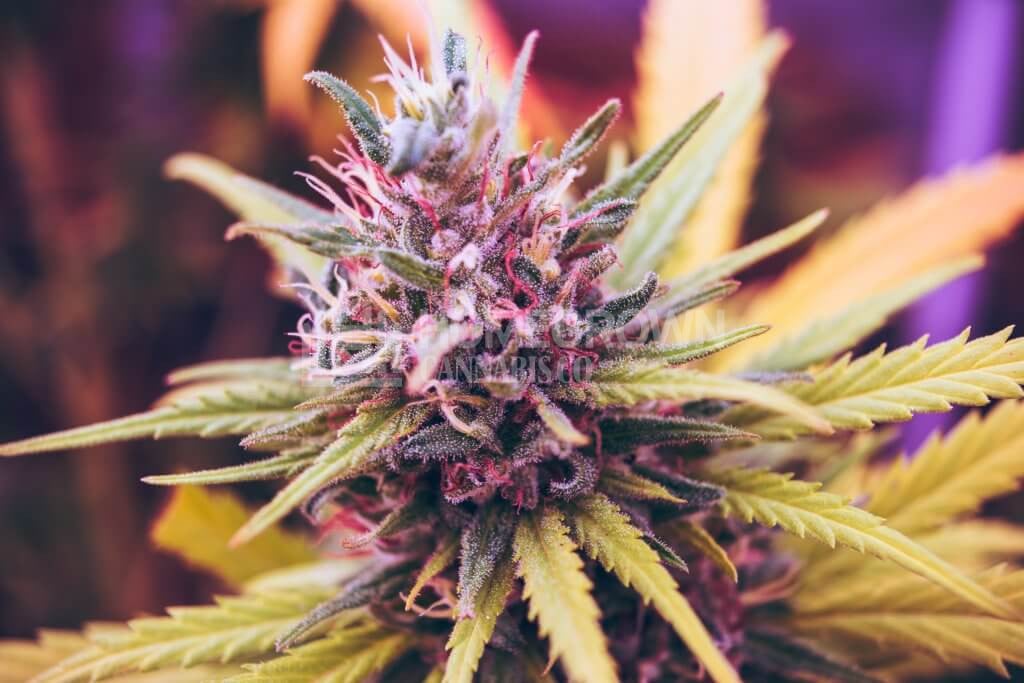
7 popular purp weed plants
Now that you know genetics matter and selecting the correct strain is the key to growing purple marijuana, here’s a list of some of the most popular purple seeds you can choose from. In addition, we’ve summarized the key traits of each strain for your convenience.
Grandaddy Purple (GDP) Regular
One of the most popular purple weed plants on the cannabis scene.
- Type: Mostly indica
- THC: 21%
- CBD: 0.3%
- Top reported effects: Relaxed, calming, sedative
- Top reported flavors: Grape, earthy, berry
- Flowering time: 8–10 weeks
- Difficulty: Beginner
- Yield: Indoor 19.4 oz./m2 Outdoor 17.6 oz./plant
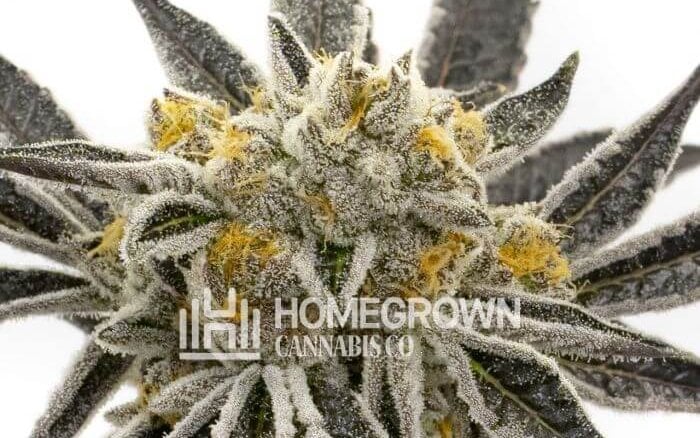
Grandaddy Purple (GDP) Feminized
A variant of the GDP purple weed that’s easy to grow without the hassle of removing males.
- Type: Mostly indica
- THC: 22%
- CBD: 0.4%
- Top reported effects: Happy, focused, euphoric
- Top reported flavors: Grape, berry, citrus
- Flowering time: 10–12 weeks
- Difficulty: Beginner
- Yield: Indoor 17.6 oz./m2 Outdoor 17.6 oz./plant
Purple Urkle Feminized
This purple cannabis strain is one of the parents of GDP.
- Type: Mostly indica
- THC: 22%
- CBD: 0.6%
- Top reported effects: Happy, focused, euphoric
- Top reported flavors: Grape, berry, earthy
- Flowering time: 8–10 weeks
- Difficulty: Beginner
- Yield: Indoor 10.58 oz./m2 Outdoor 14 oz./plant
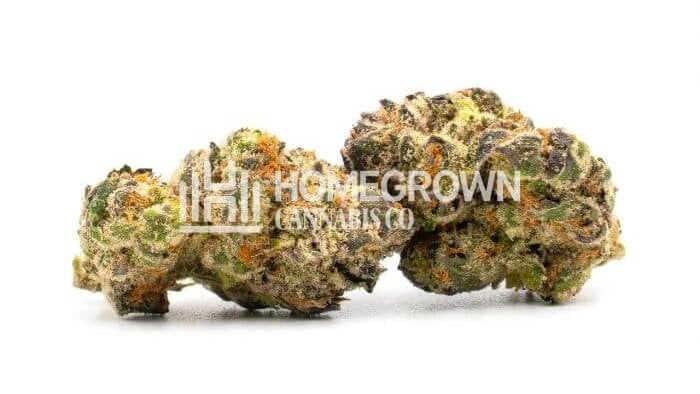
Purple Kush Feminized
This legendary purple marijuana is popular among smokers and growers.
- Type: Mostly indica
- THC: 19%
- CBD: 0.6%
- Top reported effects: Euphoric, relaxed, uplifted
- Top reported flavors: Spicy, grape, berry
- Flowering time: 6–8 weeks
- Difficulty: Easy
- Yield: Indoor 14.1–17.6 oz./m2 Outdoor 21.1 oz./plant
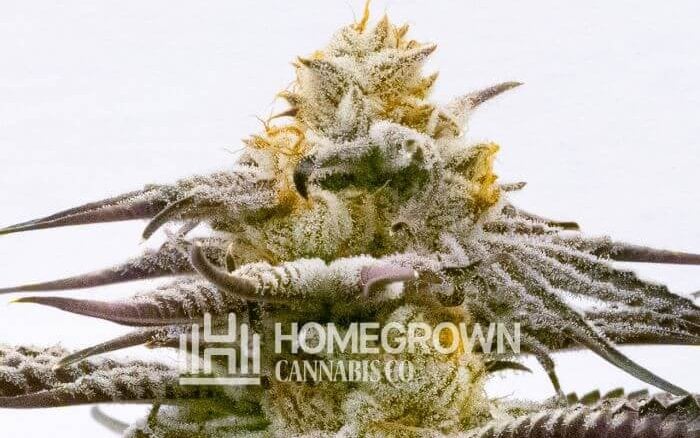
Purple Thai Feminized
This purp weed sativa is a descendant of Chocolate Thai and Highland Oaxacan Gold.
- Type: Mostly sativa
- THC: 21%
- CBD: 0.3%
- Top reported effects: Focused, happy, hungry
- Top reported flavors: Chocolate, coffee, nutty
- Flowering time: 12–14 weeks
- Difficulty: Easy
- Yield: Indoor 22.9 oz./m2 Outdoor 35.2 oz./plant

Purple Haze Feminized
A sativa-dominant strain, this purple weed is the result of a cross between Purple Thai and Haze.
- Type: Mostly sativa
- THC: 18%
- CBD: 0.3%
- Top reported effects: Creative, euphoric, giggly
- Top reported flavors: Berry, spicy, earthy
- Flowering time: 8–10 weeks
- Difficulty: Easy
- Yield: Indoor 14.1 oz./m2 Outdoor 14.1 oz./plant
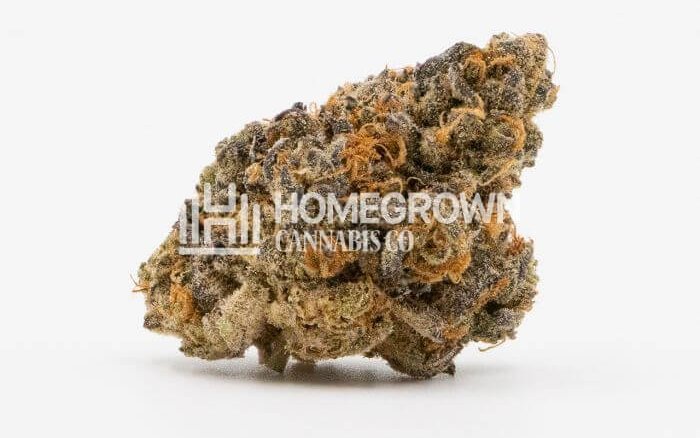
Purple Punch Feminized
This purple cannabis strain is the offspring of GDP and Larry OG.
- Type: Mostly indica
- THC: 23%
- CBD: 0.7%
- Top reported effects: Happy, creative, euphoric
- Top reported flavors: Berry, citrus, earthy
- Flowering time: 6–8 weeks
- Difficulty: Easy
- Yield: Indoor 15.87–19.4 oz./m2 Outdoor 17.6–21.1 oz./plant
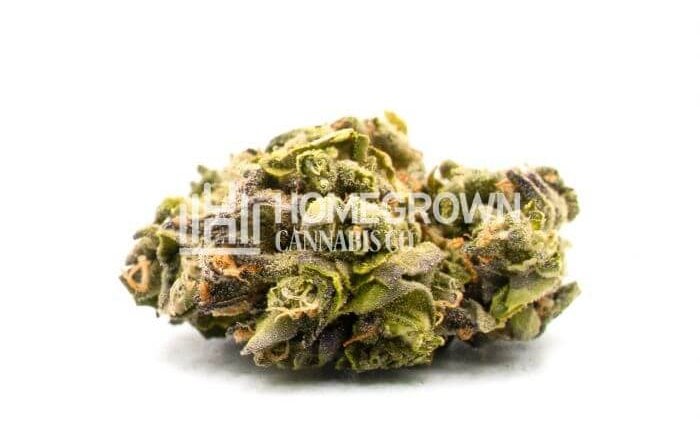
Key takeaways about purple cannabis
Let’s recap what we’ve learned about the aesthetically beautiful purple weed.
While these violet cannabis plants are much sought-after, it’s more for their appearance than their potency. There’s no evidence to show that the color makes them better than green marijuana cultivars.
Speculations abound about manipulating elements in the growth process, such as nutrient deprivation, changing the light supply, and altering the growing medium to create purple weed. However, these claims are false, and the methods have proven to be detrimental to the plants.
There are only two ways to produce the hue in purple cannabis. The presence of anthocyanins, which are determined by genetics, and low temperatures and optimal pH levels during the flowering stage.
If you plan to cultivate purple marijuana, we suggest you start with marijuana seeds from proven violet strains and avoid practices not supported by science.
FAQs
Below are our most frequently asked questions about growing purple weed. Discover tips for maximizing potency, average price, and the distinct taste you can expect from these beautiful strains.
How does the taste and flavor of purple cannabis differ from other types?
The taste and flavor of purple cannabis depends on the strain. Purple buds may have a higher concentration of flavonoids, which contributes to their sweet, fruity, and berry flavor. They also have a higher amount of the terpene myrcene, which provides a slight musky, earthy taste.
How does the THC content of purple cannabis compare to other strains?
The THC content of purple cannabis varies depending on the strain and growing conditions. It’s generally similar to other variants. The color of the plant doesn’t affect the THC content. It’s determined by the genetics and the growing conditions.
How does the price of purple cannabis seeds compare to other strains?
The price of exotic purple breeds is similar to other high-quality strains and depends on the specific retailer.
How can I identify a true purple strain?
Real purple strains have complex colors with hints of purple, green, and gold. Fake purple plants tend to be overly violet with no distinction in the trichomes and pistils. Authentic purple strains have a delicious flavor compared to fake ones with a chemical taste. Real purple buds have a dense yet springy texture, while chemically altered ones are brittle.
What are some recommended purple weed strains for beginners?
Purple strains are an excellent pick for beginners who want buds with high bag value and beautiful nugs. There’s a wide variety of these cultivars, as they’re popular for their soothing effects and gorgeous hue. Some of the best options include Purple Punch, Purple Thai, Black Water Purple OG Cheese, and Tropicana Cookies Purple.
